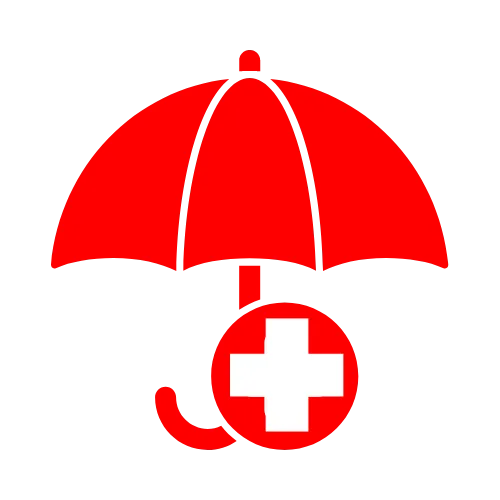what is health insurance?
Health insurance plans are available both through private insurers and the government health care exchange. Individual health insurance plans are for people who don’t have access to health insurance through their job or a government program. Family health insurance plans are for families with more than one person covered under the plan.
-
A group coverage plan at your job or your spouse or partner’s job
-
Your parents’ insurance plan, if you are under age 26
-
A plan you purchase on your own directly from a Health Insurance Company or Marketplace
-
Government programs such as: Medicare, Medicaid, Children’s Health Insurance Program
-
The Veterans Health Administration or TRICARE for military personnel
-
Your state, if it provides a health insurance plan
-
Continuing employer coverage from your former employer, on a temporary basis under the Consolidated Omnibus Budget Reconciliation Act (COBRA)
WHERE TO GET HEALTH COVERAGE?
When choosing a health insurance plan, you’ll need to decide what type of coverage you want. There are 4 types of health insurance plans:
HEALTH MAINTENANCE ORGANIZATIONS (HMOs) and EXCLUSIVE PROVIDER ORGANIZATIONS (EPOs)
HMOs and EPOs may limit coverage to providers inside their networks. A network is a list of doctors, hospitals, and other health care providers that provide medical care to members of a specific health plan. If you use a doctor or facility that isn't in the HMO’s network, you may have to pay the full cost of the services provided.
HMO members usually have a primary care doctor and must get referrals to see specialists. This is generally not true for EPOs.
PREFERRED PROVIDER ORGANIZATIONS (PPOs) and POINT-OF-SERVICE PLANS (POS)
These insurance plans give you a choice of getting care within or outside of a provider network. With PPO or POS plans, you may use out-of-network providers and facilities, but you’ll have to pay more than if you use in-network ones.
If you have a PPO plan, you can visit any doctor without a referral. If you have a POS plan, you can visit any in-network provider without a referral, but you’ll need one to visit a provider out-of-network.
HIGH DEDUCTABLE HEALTH PLAN (HDHP)
High Deductible Health Plans typically feature lower premiums and higher deductibles than traditional insurance plans.
If you have an HDHP, you can use a health savings account or a health reimbursement arrangement to pay for qualified out-of-pocket medical costs. This can lower the amount of federal tax you owe.
CATASTROPHIC HEALTH INSURANCE PLAN
A catastrophic health insurance plan covers essential health benefits but has a very high deductible. This means it provides a kind of "safety net" coverage in case you have an accident or serious illness.
Catastrophic plans usually do not provide coverage for services like prescription drugs or shots. Premiums for catastrophic plans may be lower than traditional health insurance plans, but deductibles are usually much higher.
-
Individual and Family health insurance in the United States has undergone a lot of change in recent years. In 2010, the Affordable Care Act (ACA) was passed, and since then, there have been a number of changes to the individual health insurance market.
-
One of the most significant changes brought about by the ACA is the introduction of the individual mandate. The individual mandate requires all individuals to have health insurance coverage, or else they will face a tax penalty. This has led to an increase in the number of people with health insurance coverage, as more people are now compelled to buy coverage.
-
Another change that has taken place in the individual health insurance market is the expansion of Medicaid. Under the ACA, states were allowed to expand their Medicaid programs to cover more people. As a result, the number of people covered by Medicaid has increased significantly.
-
Despite these challenges, the individual health insurance market is still a viable option for people who need coverage. The market is constantly changing, so it’s important to stay up-to-date on the latest developments. If you’re considering buying individual health insurance, be sure to shop around and compare plans to find the best one for you.
INDIVIDUAL AND FAMILY HEALTH INSURANCE
-
Medicare
-
Medicaid
-
Children’s Health Insurance Program
-
The Veterans Health Administration or TRICARE for military personnel
-
Your state, if it provides a health insurance plan
-
Continuing employer coverage from your former employer, on a temporary basis under the Consolidated Omnibus Budget Reconciliation Act (COBRA)
GOVERNMENT HEALTH INSURANCE PROGRAMS
Government health insurance programs such as:
This is a solicitation for insurance. Submitting your information and/or calling the numbers listed on this website will direct you to a licensed Agent/Broker. Important disclosures about Medicare Plans: Medicare has neither endorsed nor reviewed this information. Not connected or affiliated with any United States Government or State agency. We do not offer every plan available in your area. Any information we provide is limited to those plans we do offer in your area. Please contact Medicare.gov, 1-800-MEDICARE, or your local State Health Insurance Assistance Program (SHIP) to get information on all of your options.

